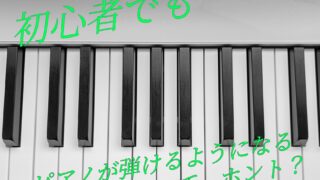TOEFL ibt リーディングテストのスコアを改善するには…
自分も、リーディング問題に苦戦したことがありますが、
一番の対策は、多読をすること。
このシリーズでは、リーディング対策用の設問も合わせて
様々なトピックでリーディング練習が出来るようにしております。
ぜひ、活用して、自身のスコアアップを目指して下さい。
本文
Title: The Spanish Inquisition: Examining a Dark Chapter in History
The Spanish Inquisition, established in 1478 by Catholic Monarchs Ferdinand II of Aragon and Isabella I of Castile, stands as one of the most infamous and brutal episodes in the history of the Inquisition. This ecclesiastical tribunal aimed to maintain Catholic orthodoxy in their realms and eliminate any perceived heresy or non-conformity. The Spanish Inquisition had profound and lasting effects on Spain and its territories, leaving an indelible mark on the collective memory.
Origins and Establishment:
The roots of the Spanish Inquisition can be traced back to the Reconquista, the centuries-long Christian reconquest of the Iberian Peninsula from Muslim rule. As Catholic monarchs sought to consolidate power and enforce religious unity, they turned to the Inquisition as a tool to eliminate any challenges to Catholic orthodoxy. In 1478, Pope Sixtus IV granted them authority to establish the Spanish Inquisition.
Methods and Procedures:
The Spanish Inquisition employed a range of methods to identify and persecute heretics. Specialized inquisitors, often Dominican and Franciscan friars, were appointed to investigate and prosecute cases. The accused faced secrecy, torture, and the absence of legal counsel. The infamous auto-da-fé, a public ceremony of judgment and punishment, was a theatrical display of the Inquisition’s power.
Targeted Groups:
While initially focused on conversos (Jews and Muslims who had converted to Christianity), the Spanish Inquisition expanded its reach to include Protestants, Freemasons, and individuals suspected of practicing forbidden arts. The arbitrary nature of accusations and trials meant that virtually anyone could become a target, leading to a pervasive atmosphere of fear and suspicion.
Expulsion of Jews and Muslims:
In 1492, the same year Christopher Columbus set sail for the Americas, the Catholic Monarchs issued the Alhambra Decree, ordering the expulsion of Jews from Spain unless they converted to Christianity. This mass expulsion, coupled with the earlier expulsion of Muslims, marked a dark chapter in Spain’s history. Many Jews and Muslims chose conversion to avoid expulsion, leading to the rise of conversos.
The Inquisition in the Colonies:
As Spain expanded its colonial empire, the Inquisition followed. The tribunal operated in Spanish colonies, including Mexico, Peru, and the Philippines. Its presence in the colonies further extended the reach of the Inquisition, impacting the lives of those in distant lands. The tribunal’s influence persisted for centuries in some regions.
End of the Inquisition:
The decline of the Spanish Inquisition began in the 18th century with the Enlightenment and the spread of liberal ideas. Reformist efforts sought to limit the Inquisition’s power, and in 1834, it was officially disbanded. By this time, the once-dominant influence of the Catholic Church in Spain had waned, and the Inquisition’s methods were increasingly viewed as outdated and inhumane.
Impact on Spanish Society:
The Spanish Inquisition left a lasting impact on Spain, shaping its cultural, social, and religious landscape. The trauma of persecution and the suppression of diversity lingered for generations. The expulsion of skilled professionals, such as merchants and artisans, also had economic repercussions. The fear of the Inquisition and its legacy persisted long after its formal abolition.
設問
- When was the Spanish Inquisition established?
a. 1392
b. 1478
c. 1505
d. 1556 - Who were the Catholic Monarchs responsible for the establishment of the Spanish Inquisition?
a. Ferdinand I and Isabella II
b. Ferdinand II of Aragon and Isabella I of Castile
c. Philip II and Mary I
d. Charles I and Joanna the Mad - What was the initial focus of the Spanish Inquisition?
a. Protestants
b. Freemasons
c. Conversos
d. Muslims - What event marked the expulsion of Jews from Spain in 1492?
a. The Reconquista
b. The Alhambra Decree
c. The Spanish Armada
d. The Treaty of Tordesillas - Which religious group faced expulsion in 1492, the same year as the expulsion of Jews?
a. Zoroastrians
b. Hindus
c. Muslims
d. Buddhists - Where did the Spanish Inquisition operate outside of Spain?
a. France
b. England
c. Spanish colonies
d. Italy - What was the Alhambra Decree?
a. A declaration of war
b. An order for the expulsion of Jews
c. A peace treaty
d. A constitutional charter - What public ceremony was used by the Inquisition for judgment and punishment?
a. Carnaval
b. Auto-da-fé
c. Fête de la Musique
d. Oktoberfest - When did the decline of the Spanish Inquisition begin?
a. 16th century
b. 17th century
c. 18th century
d. 19th century - What contributed to the end of the Spanish Inquisition?
a. The Renaissance
b. The Industrial Revolution
c. The Enlightenment
d. The Romantic movement
解答・解説
- b. 1478 – スペイン宗教裁判所(スペイン宗教裁判)は1478年に設立されました。
- b. Ferdinand II of Aragon and Isabella I of Castile – スペイン宗教裁判所の設立を担当したのはカトリック君主、アラゴンのフェルナンド2世とカスティーリャのイサベル1世でした。
- c. Conversos – スペイン宗教裁判所の最初の焦点はコンベルソ(ユダヤ人およびイスラム教徒からキリスト教に改宗した人々)でした。
- b. The Alhambra Decree – 1492年にユダヤ人をスペインから追放するアルハンブラ勅令が発令されました。
- c. Muslims – 1492年にはユダヤ人の追放と同じ年に、イスラム教徒もスペインから追放されました。
- c. Spanish colonies – スペインの植民地、メキシコ、ペルー、フィリピンなどでスペイン宗教裁判所は活動しました。
- b. An order for the expulsion of Jews – アルハンブラ勅令はユダヤ人の追放を命じるものでした。
- b. Auto-da-fé – 宗教裁判所は判決と処罰のためにオート・ダ・フェと呼ばれる公開の儀式を使用しました。
- c. 18th century – スペイン宗教裁判所の衰退は18世紀に始まりました。
- c. The Enlightenment – スペイン宗教裁判所の終焉には啓蒙時代の影響がありました。
本文の日本語訳
Title: スペイン宗教裁判所: 歴史の暗い一ページの検証
スペイン宗教裁判所は、1478年にカトリック君主フェルナンド2世(アラゴン)とイサベル1世(カスティーリャ)によって設立され、宗教法廷の歴史において最も悪名高く残忍な出来事の一つとして存在しています。この宗教法廷は、カトリック正統主義を維持し、異端や不一致と見なされるものを排除することを目的としていました。スペイン宗教裁判所は、スペインおよびその領土に深い影響を与え、集団の記憶に不可分な印を残しました。
起源と設立:
スペイン宗教裁判所のルーツはレコンキスタに遡ります。これは、ムーア人の支配からイベリア半島を数世紀にわたりキリスト教徒が奪還した歴史的な出来事です。カトリック君主たちは権力を統合し、宗教的統一を強化しようとしました。そして、カトリック正統主義に挑戦するものを排除する手段として宗教裁判所に頼りました。1478年、教皇シクストゥス4世はスペイン宗教裁判所の設立権限を与えました。
手法と手続き:
スペイン宗教裁判所は異端者を特定し、迫害するためにさまざまな手法を用いました。専門の審問官は、しばしばドミニコ修道士やフランシスコ修道士で構成され、事件の調査と起訴を担当しました。被告者は秘密主義、拷問、法的助言の不在に直面しました。悪名高いオート・ダ・フェ(信仰裁判)は、宗教裁判所の権力を劇的に示す公開の儀式でした。
対象とされた集団:
最初はコンベルソ(ユダヤ教徒やイスラム教徒からキリスト教に改宗した者)に焦点を当てていたスペイン宗教裁判所は、その後、プロテスタント、フリーメイソン、禁じられた芸術を行ったと疑われる個人などを含め、その対象を拡大しました。非難と裁判の恣意的な性質から、実質的に誰でも対象になる可能性があり、恐怖と疑念の普遍的な雰囲気が生まれました。
ユダヤ教徒とイスラム教徒の追放:
1492年、クリストファー・コロンブスがアメリカに船出した同じ年、カトリック君主たちはアルハンブラ勅令を発布し、ユダヤ教徒をキリスト教に改宗しない限り、スペインから追放するよう命じました。この大量の追放と前もって行われたイスラム教徒の追放は、スペインの歴史において暗黒の時代を刻んだものでした。多くのユダヤ教徒とイスラム教徒は追放を避けるために改宗を選び、これによりコンベルソの台頭が生まれました。
植民地時代の宗教裁判所:
スペインが植民地帝国を拡大すると、宗教裁判所もそれに従いました。この法廷はメキシコ、ペルー、フィリピンなど、スペインの植民地で活動しました。これにより宗教裁判所の影響が遠くの土地の人々の生活にも及びました。法廷の影響は一部の地域で何世紀も続きました。
宗教裁判所の終焉:
スペイン宗教裁判所の衰退は18世紀に始まり、啓蒙時代と自由主義の思想の広がりが影響しました。改革の努力は宗教裁判所の権力を制限し、1834年には正式に解散されました。この時までにスペインにおけるカトリック教会の支配的な影響力は低下し、宗教裁判所の手法は時代遅れで非人道的なものと見なされるようになっていました。
スペイン社会への影響:
スペイン宗教裁判所はスペインに深い影響を与え、その文化的、社会的、宗教的景観を形作りました。迫害と多様性の抑圧のトラウマは世代にわたり残りました。優れた専門家、商人、職人などの追放も経済への影響を与えました。宗教裁判所への恐れとその遺産は、その正式な廃止後も長く残りました。
次の問題
[広告]
確かな英語力は、日々の継続から。
その継続を後押しする、第二言語習得理論に基づいた
オンライン英語学習プログラムがあります。
英語を使う人のための、確実なスキルアップが望める
7日間の無料体験はこちらから!

TOEFL ibt ライティング対策も、
あるテクノロジーを活用すれば、一発解決!
自分1人でも、ライティングは対策出来る時代に。
英会話を始めてみたいけれど、どのサービスが良いか分からない…
そんな方は、まず、この記事で3つのサービスを比べてみてはいかがでしょうか?
英語力を効率良く伸ばすことができるサービス3選です。


-320x180.jpg)
-320x180.jpg)

-320x180.jpg)
-320x180.jpg)


-320x180.jpg)

-320x180.jpg)





コメント